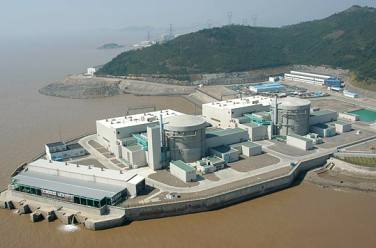Power plant to boost cobalt isotope supplies
21 January 2009

China has started production of cobalt-60 using its Candu power reactors. The new source of the isotope should cover 80% of the country's needs.
Cobalt-60 is a powerful emitter of gamma rays and has uses in food preservation, medical disinfection, manufacturing quality control and radiotherapy among other things. China National Nuclear Corporation (CNNC) said the start of production would bring 'very substantial economic and social benefits', in part because this will be China's first domestic production of the isotope.
The substance will be produced at the Qinshan Phase III nuclear power plant, which is made up of two Atomic Energy of Canada Ltd (AECL) Candu 6 pressurized heavy water reactors (PHWRs). The units have produced 665 MWe each for distribution in Zhejian province since starting up in 2002 and 2003.
Candu units are also used to produce cobalt-60 at Wolsong in South Korea, Bruce in Canada and Embalse in Argentina. An RBMK reactor at Leningrad in Russia also produces cobalt-60, as does a Siemens PHWR at Atucha in Argentina, but the Candu 6 is the only commercially available power reactor model to do so.
The core of a Candu 6 features stainless steel adjusters that help to shape neutron flux to optimise power output and ensure efficient burn up of uranium fuel. These can be replaced with copies containing cobalt-59, which have the same effects in the core, but will absorb neutron radiation to become cobalt-60.
Cobalt-59 adjusters are essentially invisible to reactor operation, including replication of the adjusters' role in boosting reactivity to counter the negative effects of xenon-135 that accumulates after reductions in power.
CNNC said that the cobalt-59 'targets' would remain in the core until April 2010 before being withdrawn for processing. In the meantime, CNNC said some work remains to complete the construction of hot cells for inspecting and processing the targets, as well as the design and manufacture of transport containers.
The development is part of China’s eleventh five-year plan, and should lead to the production of 6 million Curies in cobalt-60 per year - enough to satisfy 80% of Chinese needs. The addition will boost global production by around 10%, according to World Nuclear Association research.